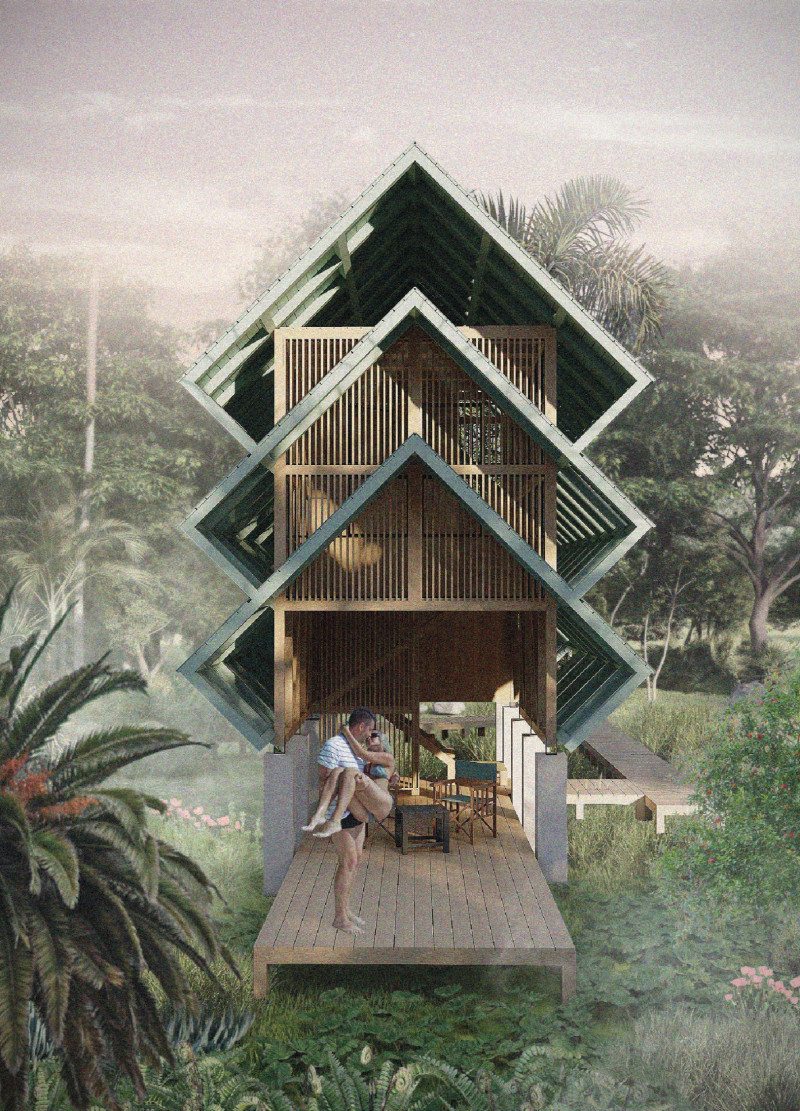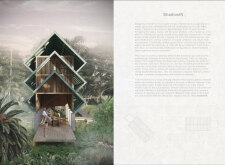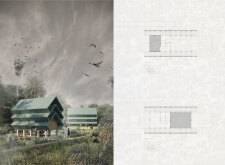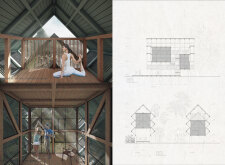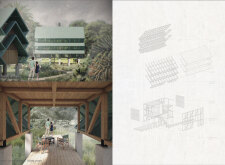5 key facts about this project
The retreat hut is located in Cambodia’s rich tropical environment, aiming to create a space that fosters connection with nature. The design focuses on enhancing the experience of living in this setting through careful attention to the arrangement of spaces. It combines privacy with areas for social interaction, allowing residents to fully engage with the landscape around them.
Spatial Configuration
The layout of the hut defines two main areas for living. One section includes a bedroom and bathroom, which offer needed privacy. The other area features a main terrace that functions as a living room and meditation space. This separation of spaces facilitates various activities while maintaining a sense of intimacy. Residents can choose to enjoy communal gatherings or retreat to their private quarters when desired.
Vertical Stacking
An important feature of the design is the vertical stacking of the living spaces. Functional units are positioned with a gap between them measuring half the height of the ceiling. This arrangement promotes movement through the hut, linking the indoors with the outdoors. Occupants navigate through these layers, experiencing varying perspectives of the natural surroundings as they move freely between spaces.
Roof Configuration
The roof is designed with stacked layers that provide essential sun protection. This feature serves a dual purpose: it protects from the sun while allowing for clear views of the jungle. The interplay of light and shade creates a comfortable atmosphere inside. The roof's design helps to connect the structure to its environment, enhancing the overall experience of living in the retreat.
Climate Responsiveness
In response to Cambodia’s hot and humid climate, the hut emphasizes natural ventilation and minimizes heat buildup. By using open boundaries and a thoughtful distribution of spaces, the design helps maintain a comfortable indoor environment throughout the year. These considerations reflect a practical approach to local conditions while respecting traditional building practices.
The structure is supported by a wooden skeleton, which is common in regional architecture. This choice brings an earthy quality to the design, grounding it in its landscape. Every element of the retreat hut invites residents to appreciate their surroundings, creating a peaceful sanctuary that balances the needs of modern living with the beauty of nature.


